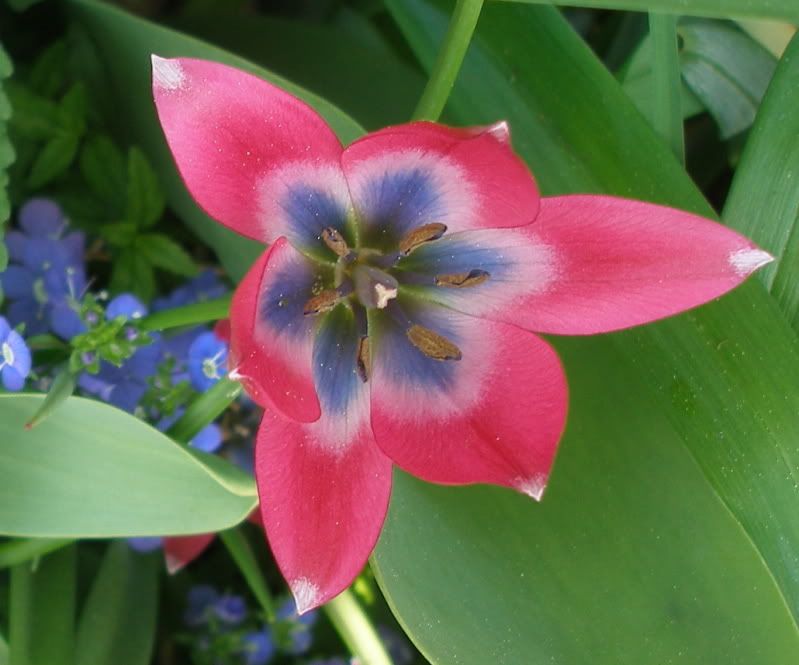
Species Tulip 'Little Beauty' with Veronica 'Georgia Blue'
Another cold day, so another post so close to the last one! I don't believe I posted about tulips before. Tulips are another spring favorite of mine. Though the daffodil still leads. Tulips aren't always as easy as daffodils. Some people think of them as annuals and replace them every year. Some people don't want to go to that trouble so they don't plant them at all. They do need a bit more careful selection of siting to be successful perennials in they garden, but it is possible.

Rem's (Rembrant's) Favorite in a sunny border full of tulips
There are a few things you must do to have the best possible chances of perennialization. First, you must have a sunny spot that is fairly well drained all year and is fairly dry in the summer. You do not want them in a border that you do supplemental watering to. A raised bed is always a good choice.
Second, plant them deep. Shallow planted tulips will bloom very well the first spring, but they won't perennialize as well.
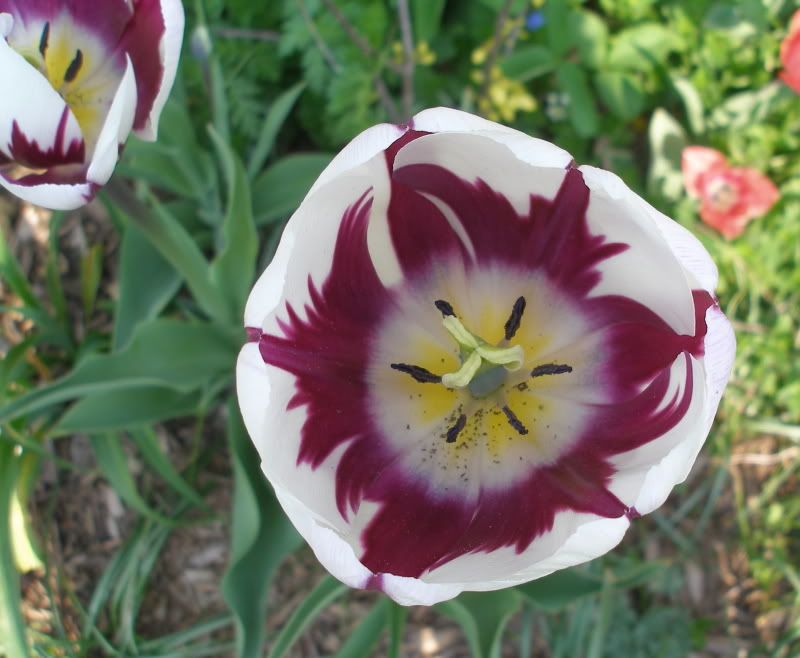
Rem's Favorite from above
Third, choose the right varieties. Species tulips are an excellent choice. They often cost less too. (Though there a few costly ones.) These are the best for down south. Many do not need the chill time of their large Dutch bred relatives. The Dutch ones are the long stemmed types that people often think of when you say tulip. Though there are many other kinds of tulips. Tulips species originated in southern Europe across the middle east and over to China. So there are quite a few from milder climates. They may not have the tall cutting stems of the Dutch bred ones, but in the garden, they can still hold their.
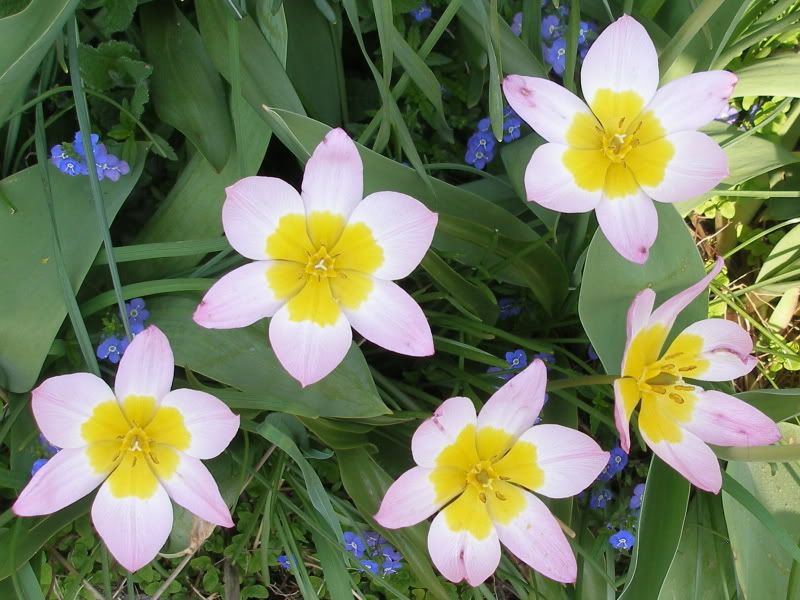
Species Tulip bakeri 'Lilac Wonder'
Some types like the Fosteriana(sometimes called Emperor) have quite large flowers.
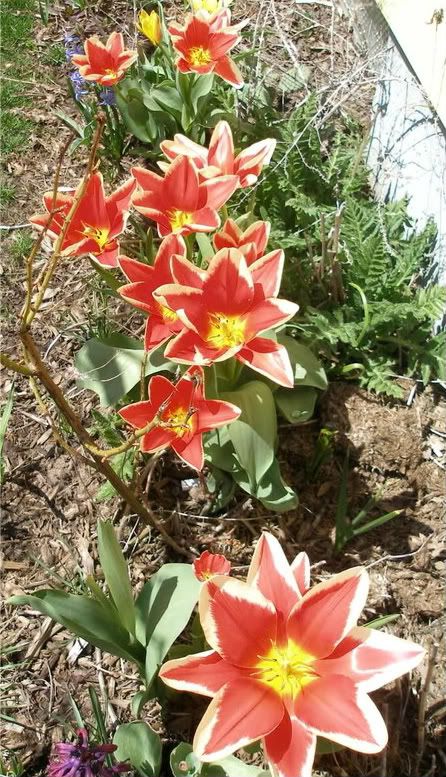
Clump of Analita Fosteriana tulips
Some have really neat leaves. kaufmanniana types have variegated foliage.
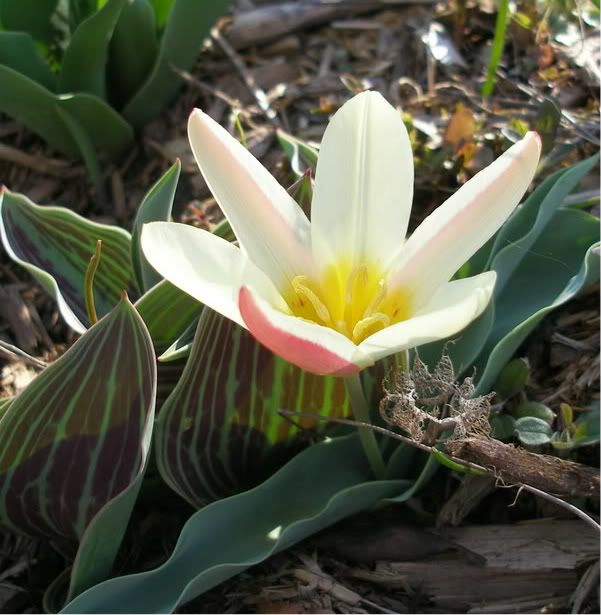
Ancilla Tulip
For taller traditional dutch bred bedding tulips to be perennials, choose ones from the Darwin Group. Those seem to have more staying power. Also, choose older time tested cultivars. They have a better chance of having been bred for the garden as opposed to a cutting flower like many of the more modern varieties have been. Though, I have had success with various other dutch tulips. It is more of a gamble though. It is good to record the names. So when you find strong ones in your garden, you can purchase them a few years later to add more punch to your spring border.
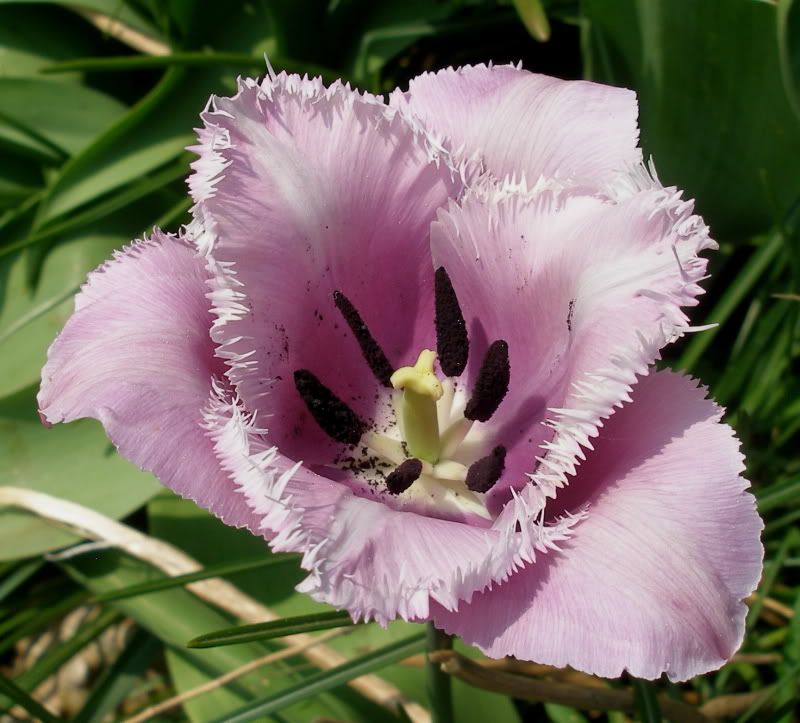
Fringed Tulip 'Blue Heron', I still have a few returning even though I planted them over 10 years ago.
Fourthly, to optimize success, break off the tip of the stem where the flower was after it falls off. You do not want your tulips to develop seeds. This weakens the bulb. You want the energy to go back into the bulb.
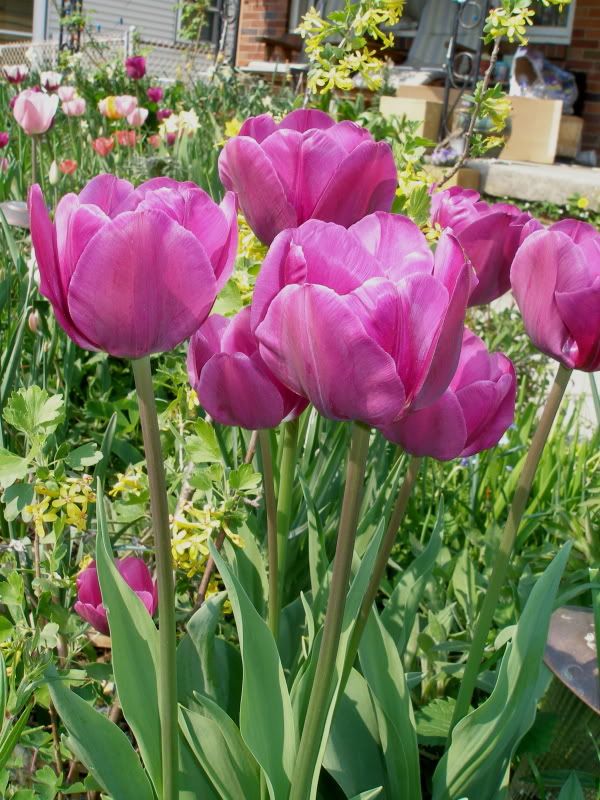
Lastly, let the foliage get old and ratty. I know it doesn't look so hot, but there is no way around it. You need to let the bulb get all the nutrients it can from the foliage. Species tulip foliage though is less noticeable so for you neat freaks these are definitely a better choice.
My two favorite places to buy bulbs from are
Brent and Becky's
John Scheepers


No comments:
Post a Comment